4th Island Meeting Held on Hahajima
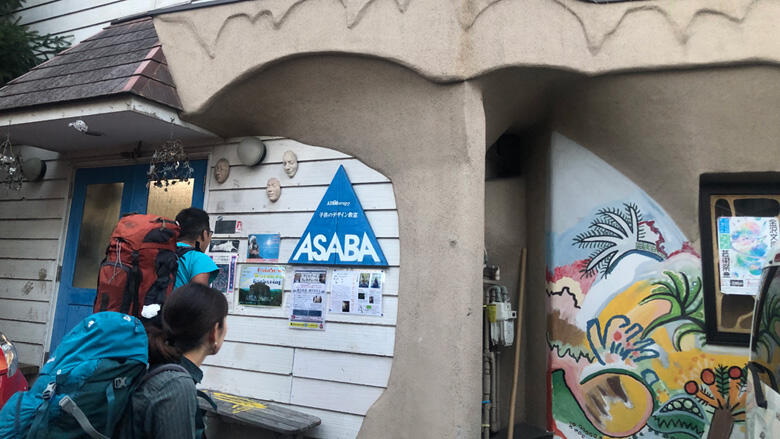
The Tokyo Treasure Islands Project is a project which aims to refine the Tokyo's islands brands through "Shima-Kaigi" (Island Meetings) with residents. This report covers the fourth Hahajima island meeting and the study tour held on October 28 and 29.
>> Click here for more information on Hahajima
Departing for the study tour in search of ideas full of the essence and future of Hahajima
The participants from Hahajima, who in the previous session came up with "a motherly island where a humanly lifestyle is possible" as the brand value of the island, are now discussing detailed action plans to realize that value. They are thinking about creating a venue where the residents will spontaneously gather to continuously discuss initiatives that need to be done for the future of the island.
For the study tour that will be conducted as the fourth island meeting, the participants will head to the Kanazawa-bunko Art Festival and the Bakatsudo to find hints on polishing Hahajima's action plan.
The balance of impartiality at the core of Kanazawa-bunko Art Festival
The Kanazawa-bunko Art Festival is an art event held at Marine Park and its surroundings in Yokohama City every September. Since the event began in 1999, this year marks the 21st festival. Over 30,000 people attend the opening festival, which has many art booths, food booths, and workshops. Lively art rallies and workshops for children are held all around town over the course of the month.
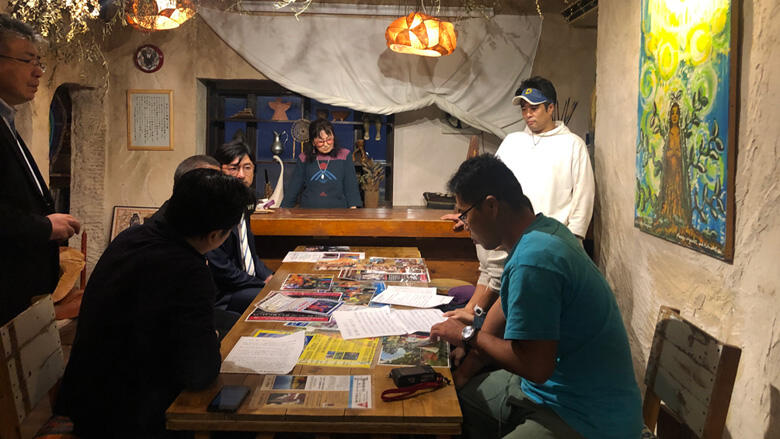
Upon arriving at the Asaba Art Square* and viewing inside the building, we were given a chance to speak with the Chairperson of Kanazawa-bunko Art Festival's Executive Committee.
*A gallery space that operates and hosts various art-related events through the cooperation of four organizations and events including the Kanazawa-bunko Art Festival.
The beginning of the Kanazawa-bunko Art Festival goes back to when the mother of the committee, who was doing design lessons, was talking casually with friends living in the neighborhood. She came up with an idea of doing an art festival focusing on children's art. The committee reflected and said, "We talked to everyone going in and out of the design lessons. People from different places with different jobs ended up coming together."
"We weren't thinking of revitalizing the region or anything at the beginning. It was more like a school festival vibe. The theme changed each year but "the children's future is the world's future" theme stuck after around the 12th time."
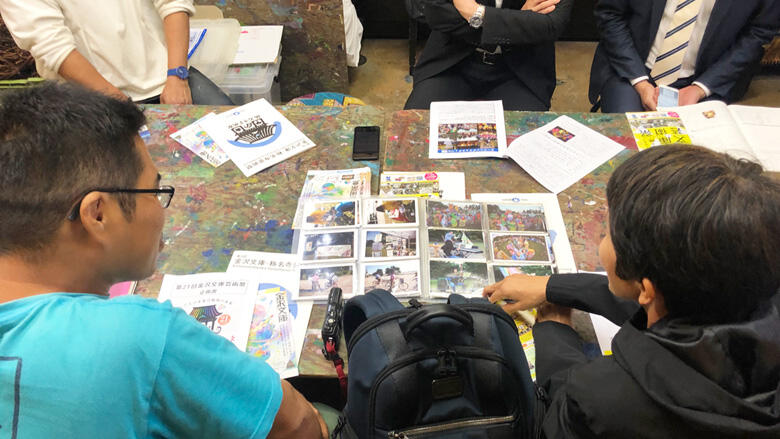
The executive committee usually begins its activities at the beginning of the year, and monthly meetings are held up until the actual event. The participants nodded when the committee said, "There are a lot of challenges, so it's important to continue."
The committee says that profits can be the root of troubles, so the event does not turn out revenue and is conducted as if it were an adult's hobby. Company sponsors, small donations, subsidies by Yokohama City, and exhibition fees cover the costs. Any remaining cash is carried over to the following year. The principles are explained to the exhibitors, so an environment is created where only those that understand participate.
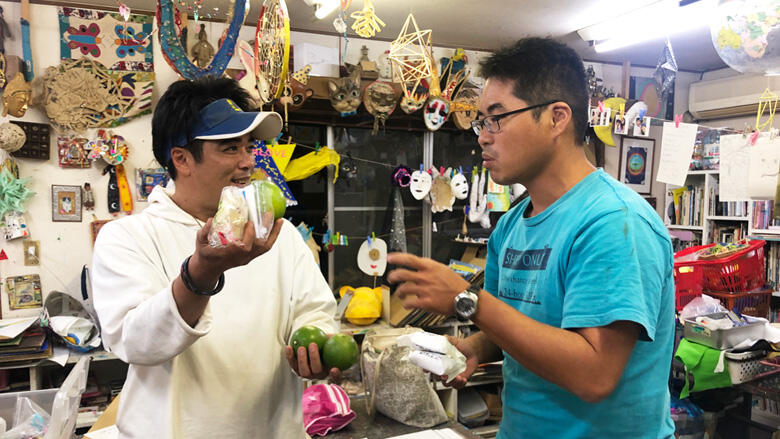
Mr. Miyagi, who chairs a young men's association of Hahajima, which has a population of around 450, voiced a concern and asked how to create a place for interactions on the island and get uninterested people involved. The committee responded by saying, "It's important to be impartial.":
Dan continued, "There was a time where the art festival was being close to being recognized by a nature-related festival. We didn't want to be seen as having a hippy vibe, so we're careful about balance," to which Mr. Miyazaki nodded deeply.
What is needed to create a place on Hahajima where everyone can gather around and speak?
On the second day, the participants visited Bakatsudo, which goes around companies and organizations and acts as a so-called "bakatsu teacher" to revitalize spaces, in order to grab some hints on creating a space for people to gather around and speak.
Their representative gave the participants clues using plenty of examples from companies, organizations, history, folktales, and even comics.
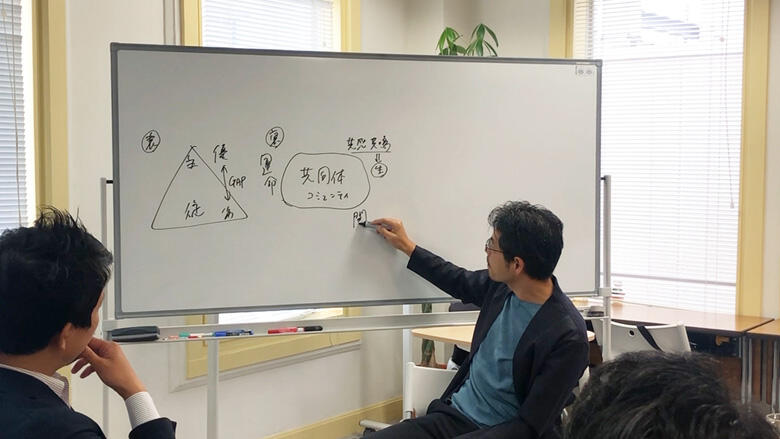
In the ensuing discussion on revitalizing the space that is Hahajima, the representative said, "Just raising a flag on an island with a population of just 450 will bring in outsiders who agree. It's important to create a story of the flag even if it sparks just 1%. It's good if the emblem can be seen. Go from being right to having fun. People gather where there's fun." Mr. Miyagi responded by saying, "I don't want things or brands. I want to create an environment where people can gather in a circle and talk. It's fine if we can call people from outside. I want to create a movement."
Making use of the bright characteristic of Hahajima
"Ogasawara is said to have a bright vibe. It's sunny and warm most of the year, and whales come to visit as well. Life is abundant throughout the year, so it might have a very energetic climate." When Mr. Miyagi said that, the representative responded by saying, "That's special, so be conscious of that. Create a place like that and make others conscious of being in Hahajima."
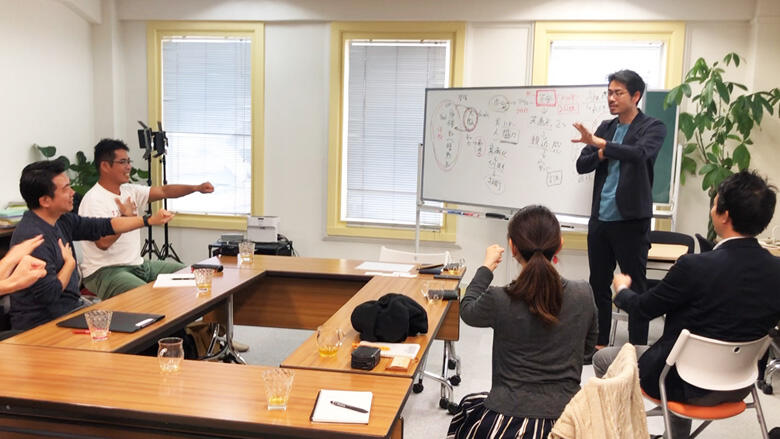
After the hearing, the participants took part in the four hints of revitalizing a space by experiencing a cooperative relationship, creating discoveries through casual talk, removing mental blocks, and being conscious of the positive.
After two days of studying, Mr. Miyagi smiled and said, "I think I can take the importance of balance in organizing a community and the know-how relating to creating spaces that I learned back to Hahajima and use them effectively."
Next time, the participants will head to the Tokyo Trasure Island Meeting on November 25.


